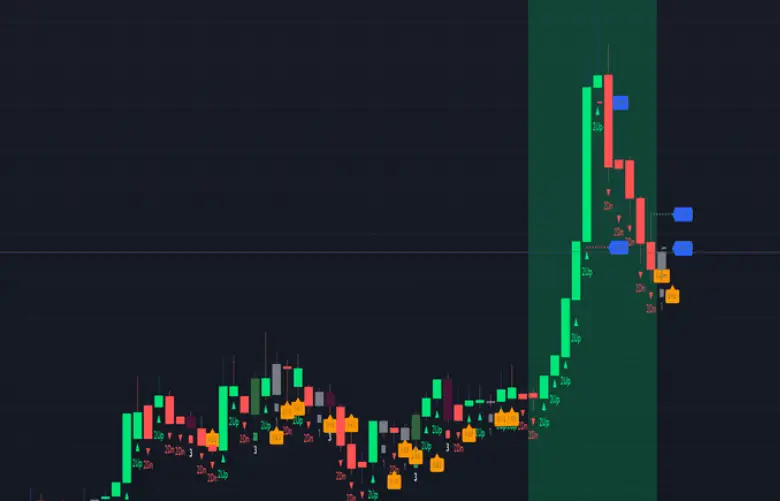In the world of stock market investing, there’s a wealth of information and ratios to consider when evaluating potential investments. One of the most fundamental and widely used metrics is the Price-to-Earnings (PE) ratio. If you’re new to the world of finance, fear not! In this comprehensive guide, we’ll dive deep into understanding the PE ratio, explaining how to calculate it, its significance in stock analysis, and even some common misconceptions.
PE Ratio Explained
The Price Earnings ratio, often referred to simply as the “PE ratio,” is a fundamental financial metric used extensively in the world of stock market analysis. At its core, the PE ratio provides insights into how investors perceive the value of a company’s stock in relation to its earnings.
- Low PE Ratio: When a company has a low PE ratio, it means that investors are paying relatively less for each dollar of earnings generated by the company. This can suggest that the stock may be undervalued, making it an attractive investment opportunity for value investors.
- High PE Ratio: Conversely, a high Price Earnings ratio determines that investors are willing to pay a premium for each dollar of earnings. This can suggest that the stock may be overvalued or that investors have high expectations for the company’s future growth.

Understanding the PE ratio is like deciphering a secret code of investor sentiment toward a company. However, it’s crucial to remember that the PE ratio is not a standalone indicator but should be considered alongside other financial metrics.
Read: Financial Literacy: Empowering the Next Generation for Financial Success
H3: Trailing PE vs. Forward PE
There are two variations of the PE ratio: trailing PE and forward PE.
- Trailing PE Ratio: This is the most common type of PE ratio and is calculated using past earnings data. It divides the current market price by the company’s historical earnings over the past 12 months. Trailing PE reflects the company’s recent financial performance.
- Forward PE Ratio: On the other hand, the forward PE ratio is based on future earnings projections. It divides the current market price by the company’s estimated earnings for the upcoming year. Forward Price Earnings offer insights into investor expectations for future performance.

POSTGRADUATE PROGRAM IN
Multi Cloud Architecture & DevOps
Master cloud architecture, DevOps practices, and automation to build scalable, resilient systems.
Calculating the PE Ratio
To calculate the PE ratio, you need two essential pieces of information: the market price per share and the earnings per share (EPS). Let’s break down the steps:
H3: Step 1: Obtain Market Price per Share
In the Indian stock market, the market price per share is the current trading price of a company’s stock on a stock exchange like the National Stock Exchange (NSE) or the Bombay Stock Exchange (BSE). You can easily find this information on financial news websites, stock market apps, or directly on the exchange websites.
For example, let’s say you’re interested in a company called “ABC Ltd.,” and its stock is currently trading at ₹500 per share on the NSE.
H3: Step 2: Calculate Earnings per Share (EPS)
To calculate the EPS, you’ll need the company’s net earnings or net profit and the total number of outstanding shares. The formula for EPS is:
EPS = Net Earnings / Total Outstanding Shares
Let’s say ABC Ltd. reported a net profit of ₹50 million in its last fiscal year, and it has 10 million outstanding shares.
EPS = ₹50,000,000 / 10,000,000 = ₹5 per share
So, ABC Ltd.’s earnings per share is ₹5.
H3: Step 3: Calculate the PE Ratio
With both the market price per share (₹500) and the EPS (₹5), you can now calculate the PE ratio for ABC Ltd.:
PE Ratio = Market Price per Share / EPS
PE Ratio = ₹500 / ₹5 = 100
In this example, ABC Ltd. has a PE ratio of 100, indicating that investors are willing to pay 100 times the company’s earnings for each share of the stock.
Importance of PE Ratio in Stock Analysis
The Price-to-Earnings (PE) ratio is a cornerstone of stock analysis for good reason. It offers valuable insights into a company’s valuation, growth prospects, and risk profile.
- Valuation Comparison: The PE ratio is an excellent tool for comparing the valuations of different companies within the same industry. It helps investors identify which stocks are relatively expensive or cheap.
- Growth Prospects: A low PE ratio suggests that a company is currently out of favor with investors but also indicates significant growth potential. On the other hand, a high PE ratio may signal a company with strong current performance but limited growth prospects.
- Risk Assessment: It can help investors assess the risk associated with a stock. High PE ratios indicate that investors have high expectations, making the stock more vulnerable to disappointments.
- Historical Analysis: Comparing a company’s current PE ratio to its historical average can provide insights into whether the stock is trading above or below its usual valuation.
PE Ratio vs. PEG Ratio: Which Is Better?
When it comes to evaluating stocks, investors have a wide range of tools at their disposal. Two commonly used metrics for assessing a company’s valuation and growth prospects are the Price-to-Earnings (PE) ratio and the Price-to-Earnings Growth (PEG) ratio.
H3: PE Ratio: A Quick Recap
The PE ratio, as discussed earlier, is a straightforward formula that divides the market price per share by the company’s earnings per share (EPS). It provides insights into how much investors will pay for each dollar of earnings the company generates. A high PE ratio may indicate that investors have high expectations for the company’s future growth, while a low PE ratio may suggest potential undervaluation.
H3: PEG Ratio: Incorporating Growth
The PEG ratio furthers the analysis by factoring in a company’s expected earnings growth rate. It provides a more nuanced view of a stock’s valuation by considering its current earnings and the potential for future growth.
The formula for the PEG ratio is as follows:
PEG Ratio = PE Ratio / Annual Earnings Growth Rate
H3: PE Ratio vs. PEG Ratio: When to Use Each
H4: PE Ratio:
- Use for quick valuation assessments.
- Strengths: Simplicity, versatility, and historical comparison.
- Limitations: Ignores growth and doesn’t account for risk.
- Ideal for: Comparative analysis, historical trends, and assessing current valuation sentiment.
H4: PEG Ratio:
- Use for growth-focused stocks.
- Strengths: Considers earnings growth, mitigates risk.
- Limitations: Relies on growth estimates, industry variability.
- Ideal for: Evaluating companies with strong growth potential, aligning valuation with expected growth.
No one-size-fits-all answer; the choice depends on your investment goals and the nature of the stocks you’re analyzing. Successful analysis often combines both ratios for a comprehensive view.

82.9%
of professionals don't believe their degree can help them get ahead at work.
Interpreting PE Ratio Trends
Interpreting the Price Earnings ratio trends is a vital skill in stock analysis. Investors can uncover valuable insights about market sentiment, valuation, and potential investment opportunities by analyzing how a company’s PE ratio evolves over time. Here’s how to make sense of PE ratio trends effectively:
- Comparative Analysis: Compare a company’s PE ratio to its industry peers. A lower PE may suggest the stock is undervalued relative to competitors, while a higher PE could indicate overvaluation.
- Historical Analysis: Compare the current PE ratio to the company’s historical averages. Significant deviations from historical norms can signal shifts in market sentiment or investor expectations.
- Growth Outlook: Assess the company’s growth prospects. A rising PE ratio over time may indicate that investors expect stronger earnings growth in the future.
- Market Conditions: Consider external economic factors and industry dynamics. Economic uncertainty or industry-specific factors can influence PE ratio trends.
- Future Expectations: Pay attention to company guidance, analyst forecasts, and news. Positive news can boost PE ratios, while negative news can have the opposite effect.
- Investor Sentiment: Understand the impact of market sentiment. Sentiment-driven fluctuations can occur based on investor emotions and reactions to news and events.
Common Misconceptions About PE Ratios
- Higher Is Always Better: It’s a mistake to assume that a high PE ratio is always a negative sign. Growth stocks with high PE ratios may still be good investments if they have strong growth prospects.
- Lower Is Always Better: Conversely, a low PE ratio doesn’t necessarily mean a stock is undervalued. It could be a sign of poor growth prospects or other underlying issues.
- One-Size-Fits-All: PE ratios should be considered in the context of the industry and the company’s specific circumstances. What’s considered high in one industry might be standard in another.
- Static Indicator: The PE ratio can change rapidly, especially for companies with volatile earnings. It’s essential to keep an eye on trends over time.
Learn About the Difference Between Financial Accounting and Management Accounting

Comparing Companies Using PE Ratios
When comparing companies using PE ratios, keep these considerations in mind:
- Industry Norms: Different industries have varying average PE ratios. Compare a company’s PE ratio to the industry average to gain insights into its relative valuation.
- Historical Trends: Analyze a company’s historical PE ratios. Is the current ratio in line with its historical average, or is it an outlier?
- Competitors: Compare the PE ratios of competing companies. This can help you identify which one is relatively undervalued or overvalued.
- Growth Prospects: Consider the growth outlook for each company. A company with strong growth potential may justify a higher PE ratio.
Conclusion
Understanding the PE ratio provides valuable insights into a company’s valuation, growth prospects, and risk. However, it’s crucial to use the PE ratio in conjunction with other financial metrics and consider the specific context of the company and industry.
Remember, the stock market is dynamic, and PE ratios can change rapidly. Regularly monitoring the PE ratios of your investments and staying informed about industry trends is key to successful stock market investing. Check out Financial Analysis, Valuation, & Risk Management Course by Hero Vired for more!
How Can I Use the PE Ratio in Investment Decisions?
- Valuation Comparison: Compare a company's PE ratio to its peers to assess relative valuation.
- Historical Analysis: Look at the company's historical PE ratios to gauge current valuation trends.
- Growth Prospects: Consider the company's growth outlook; a high PE may be justified for high-growth stocks.
- Risk Assessment: Recognize that a high PE can indicate higher risk if growth expectations aren't met.
Are There Any Limitations to Using the PE Ratio?
- Lack of Growth Consideration: The PE ratio doesn't directly account for a company's growth prospects.
- Industry Variability: Different industries have varying PE norms, making cross-industry comparisons challenging.
- Earnings Quality: A high PE can result from non-recurring or one-time gains, which may not reflect the company's true earnings power.
- Market Sentiment: PE ratios can be influenced by investor sentiment and can be subject to rapid fluctuations.
What is the Difference Between Trailing PE and Forward PE?
- Trailing PE: Uses historical earnings data (usually the past 12 months) to calculate the PE ratio. It reflects a company's recent financial performance.
- Forward PE: Relies on estimated future earnings, typically for the next 12 months. It offers insights into investor expectations for future performance.
Is a High PE Ratio Always Bad?
How Often Should I Check a Company's PE Ratio?
Updated on March 27, 2024
